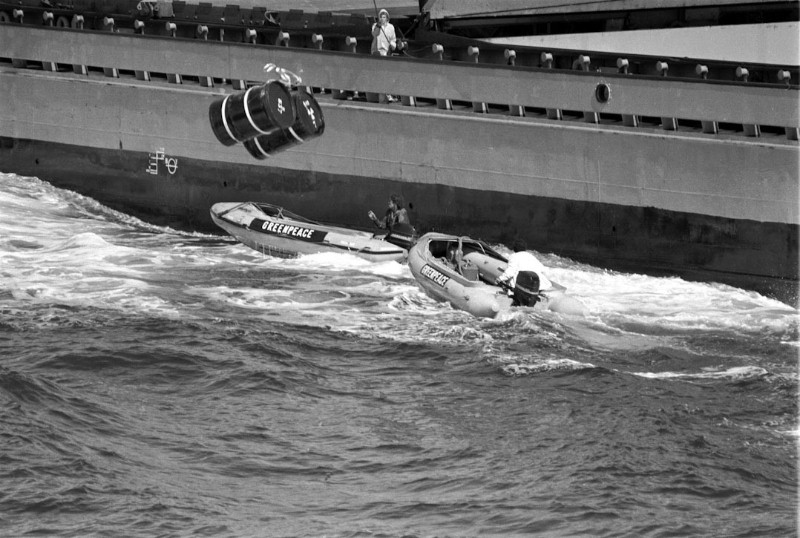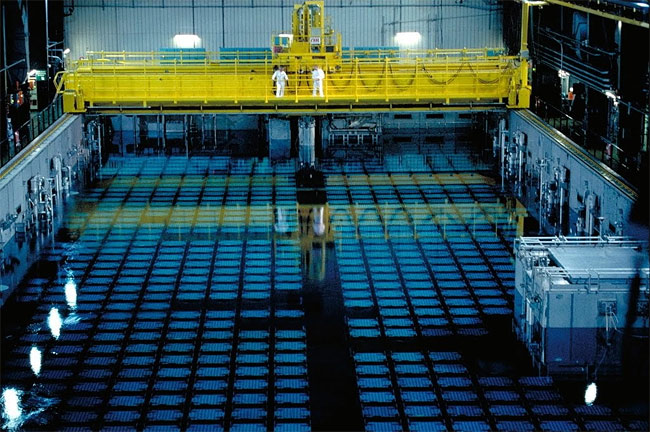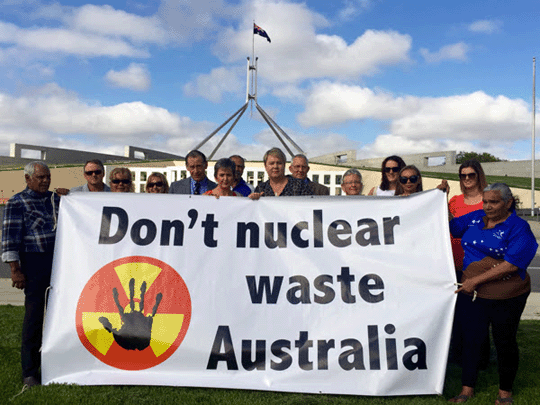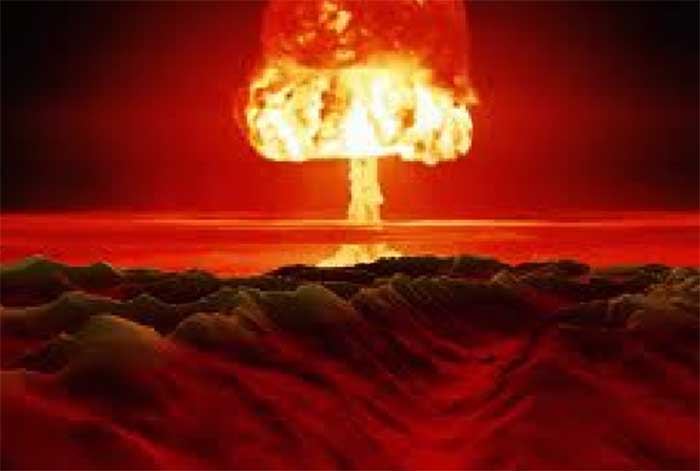
Why pay we such a price, and one we give
So clamoringly, for each racked empty day
That leads one more last human hope away,
As quiet fiends would lead past our crazed eyes
Our children to an unseen sacrifice?
Edwin Arlington Robinson, 1916
If a person persists in acting in ways that are damaging to their health, a point will be reached beyond which their capacities will inevitably decline, if not collapse. In a similar way, if we continue to collectively live in ways that are fundamentally damaging to the earth and her creatures, thresholds will be crossed beyond which unpredictable and inevitably damaging consequences will result. This is effectively the story of industrial/technological civilisation as it has unfolded over the past century.
Runaway climate change is but the latest manifestation of a process that has been steadily eroding the delicately balanced equilibrium of our planet. The contemporary litany is evident to all who have sought to remain informed. Near-universal deforestation, widespread denaturation of agricultural lands, poisoning of inland lakes and waterways through industrial and mining activities, accelerating depletion of the ocean’s fisheries and loss of coral reefs, and urban over-reach throughout the world all reflect aspects of a deepening systemic deterioration in the health of the earth’s ecosystems. These processes have been inexorably gaining momentum since the time of the industrial and petrochemical revolutions during the nineteenth century.
Among the more disturbing influences to be unleashed over the past century have been the energies within the atomic nucleus. Immediately after the fateful and devastating eruption of nuclear fire over the cities of Hiroshima and Nagasaki in August 1945, the major powers of the world sought to possess and to control the newly discovered energies within the atom. An early driver of this process was the desire for military supremacy. This desire was masked by the promotion of nuclear power as a source of energy for an increasingly energy-hungry world. The inherent dangers of nuclearisation were systematically downplayed by technocratic elites and by those attracted to the power and control made available by the nuclear demon.
The ruinous consequences of seventy years of nuclearisation are now patently manifest. The Hanford facility in the U.S., Sellafield in the U.K. and the Mayak Industrial Complex in the former Soviet Union have all served as “sacrifice zones” where plutonium pits were manufactured for deployment in nuclear warheads during the Cold War era. They are now vast nuclear wastelands with unthinkable quantities of radioactive wastes stored in ageing containers and leaking landfill sites. Less visibly, countless abandoned uranium mines throughout the world continue to release radioactivity into the air, soil, local waterways and groundwater. And most recently, the meltdowns at both Chernobyl and Fukushima have irrevocably poisoned vast tracts of land and the waters of the northern Pacific ocean, insidiously undermining the genetic future of plant, animal and human communities.
Despite the voicing of concerns regarding the “grave potential hazards” of nuclear power plants by over 2,000 members of the Union of Concerned Scientists over 40 years ago, neither the nuclear industry nor its supporters have offered a sober reflection on precisely what has been released into the world by the nuclear project. Rather, the present temper enthuses over “new builds” and spins tales of an energised nuclear renaissance driven by the promise of smaller, safer, smarter nuclear power plants to replace the fleet of ageing reactors around the world that have reached their use-by date. In the meantime, the earth heaves under 400,000 tones of spent nuclear fuel produced by these monsters with an additional 12,000 tons added to the tally with each passing year. These deadly fruits of a reckless civilisation will remain dangerous to all life over geological time scales.
The problem of nuclear waste has yet to be dealt with. There have been numerous plans made, numerous barrel-loads of dangerous waste dumped into rivers, water-ways and oceans, numerous false starts that went nowhere, and numerous failed projects. As cooling ponds around the world near their capacity, spent nuclear fuel rods have become the singular intractable problem for those who operate nuclear power plants. They generate high temperatures that must be controlled for decades. And they hold a mix of highly radioactive fission products that must be kept isolated from the environment for hundreds of thousands of years.
Early Stirrings
Although the Manhattan Project was bankrolled by the U.S. government, its conceptual and intellectual foundations were firmly rooted in the work of European physicists. Much of the early research investigating the feasibility of producing an atomic weapon was undertaken by what became known as the Maud Committee in the U.K. in 1940 and 1941. English physicists joined the Manhattan Project in 1943 and proved to be instrumental in the design and construction of the first atom bombs. After Little Boy and Fat Man had done their appalling work on the people of Hiroshima and Nagasaki, the British government lost no time in securing similar prizes. The production of weapons-grade plutonium was deemed absolutely necessary if Britain was to retain a prominent place in the emerging Promethean circus.
A small prototype nuclear reactor was designed, constructed and successfully fired up by British scientists and engineers at Harwell in August 1947. A month later, the British government had acquired the Sellafield Royal Ordnance Factory in Cumbria, changed its name to Windscale, and started building two large nuclear reactors and a reprocessing facility for plutonium extraction. Both reactors were fully operational by 1951. Their sole purpose was to produce plutonium for the creation of atomic bombs. The first plutonium was separated from spent fuel in July 1952. Within three months, the U.K. had detonated its first nuclear bomb. It shook the Montebello Islands off Western Australia to their foundations.
A year later, the U.K. government commissioned the construction of two massive 4-reactor complexes of British design for the production of both plutonium for the military and electricity for the national grid. The first reactor complex, Calder Hall, was to be situated adjacent to the Windscale facility on the Calder River. The second group of reactors was to be sited at Chapelcross in Scotland. Australian physicist and historian of science Jim Falk has referred to Calder Hall in the following terms: “In 1956 the first ‘commercial’ nuclear reactor began operation in the U.K. It was a plutonium producer for the nuclear weapons program, to which had been added a small generator.”

The first of the Calder Hall reactors was triumphantly launched by Her Majesty Queen Elizabeth II on October 17th 1956. It was the first industrial-scale nuclear reactor to be built anywhere in the world. The dual purpose Calder Hall reactors ushered in what would become a fleet of 26 Magnox nuclear reactors constructed in the U.K. between 1956 and 1971. The Magnox reactors were so-named because the cladding for the fuel rods was made of magnesium-aluminium alloy. A peculiarity of this design was that spent fuel rods were prone to early deterioration and therefore could only be stored for a limited time. They were designed for rapid reprocessing in order to extract plutonium.
The reprocessing of spent nuclear fuel took place at Windscale just across the river. These activities have gifted the U.K. with a nightmarish stockpile of nuclear waste – including over 100 tonnes of plutonium – that nobody knows what to do with.
The Growing Burden
By the mid-1970s, it had become apparent to those within the U.K. nuclear establishment that it was faced with a major problem. A number of the 26 Magnox reactors were by that time approaching their use-by date and a second generation of more powerful Advanced Gas-cooled Reactors (AGRs) were about to be fired up. Immense amounts of radioactive waste from Windscale had already been dumped into the Irish Sea, the English Channel, and into deep channels in the North Atlantic ocean. By 1982, nuclear activities in the U.K. had contributed 80% of the load of 140,000 tons of nuclear waste sitting on the North Atlantic ocean floor in flimsy metal drums. The high level wastes from nuclear reactors and the reprocessing of spent fuel were not, however, to be so easily disposed of.
Spent fuel rods from Magnox reactors were reprocessed at Windscale in order to recover plutonium and uranium for recycling. This involved dissolving the fuel rods in nitric acid and subsequently separating out the various fission products using a range of solvents. The reprocessing of spent fuel created vast quantities of high-level fission products in liquid form. Much of this liquid waste was stored in stainless steel tanks but from the 1960s, various methods of fusing the waste into glass blocks were tested in order to convert the liquid into a more stable form that could later be stored in geological repositories that were yet to be built.
In 1976, the United Kingdom Atomic Energy Authority (UKAEA) started to search out possible sites in the U.K. for the burial of wastes from British reactors. The Scottish highlands were early identified as relatively stable geological areas where high level nuclear waste could be stored underground. From an initial list of 127 possible sites, 8 were selected for test drilling and further investigation. The process did not, however, get very far once word began to circulate and public opposition gathered momentum. Other sites were nominated in Somerset, Leicestershire, North Wales and Caithness in Scotland soon after, but they too suffered a similar fate. Local protests were so strong that these did not even get past the stage of test drilling.

Realising the extent of public opposition, the government changed direction and in 1981, refocussed its attention on the growing reserves of low and intermediate level wastes hoping that their disposal would attract less opposition. Again, they were mistaken. Up until that time, such wastes were often secretly dumped into the sea in metal drums. Once this became known, Greenpeace and other activist groups sprung into action. They ignited widespread outrage by alerting the public to the routine practise of ocean dumping of nuclear wastes. The British government could no longer rely on such reckless ways and began to look for other methods of disposal. Its attempts to create sites for the underground burial of low level wastes over the following 15 years proved fruitless, again because of vocal opposition from local communities.
By the late 1990s, Sellafield, the former Windscale site, had become the de facto storage site for much of the U.K.s nuclear wastes. In addition, vast tonnages of steadily-accumulating spent fuel languished in cooling ponds situated alongside the nuclear reactors of Great Britain.
Mountains of Waste
The situation was similarly fraught on the other side of the Atlantic. As early as the mid-1950s, scientists and engineers in the U.S. had understood that the promotion of civil nuclear reactors for electricity production as part of the grievously misnamed “Atoms for Peace” program would compound the already thorny issue of nuclear waste management. Despite their call for the creation of suitable geological repositories in anticipation of the flood of high level wastes that would issue from a civil nuclear energy program, very little was actually done.

It took another 40 years before work commenced on the construction of a deep geological repository at Yucca Mountain in Nevada in 1994. Fifteen years and fifteen billion dollars later, the Obama Administration declared the project unworkable due to unresolved safety issues. The Yucca Mountain project was formally abandoned in 2009 without taking in a single gram of nuclear waste. Soon after, nuclear power facilities in 38 states commenced legal proceedings against the US government claiming tens of billions of dollars in damages for failing to deliver. In the meantime, over 2,000 tonnes of incandescent spent fuel rods continue to be added to the already overloaded cooling ponds of nuclear reactors throughout the U.S. with each passing year
The situation in Canada which was also involved in the nuclear project from its inception in the 1940s is equally chaotic. As in the U.K., steps were taken by the Canadian government to create geological repositories for the long-term storage of its growing stores of nuclear waste during the late 1970s. And as in the U.K., the plans came to naught due to widespread popular opposition.
Nearly four decades later, and after numerous studies and investigations by the Canadian government and the nuclear industry, the situation remains precarious and uncertain. Work has yet to actually begin on the construction of a deep geological repository for Canada’s nuclear wastes, but the government is confident that a suitable site will be located and that a storage facility will be built and made ready to receive its deadly accumulations by 2035.
It can therefore come as no surprise that the entrepreneurial possibilities for creating a lucrative international repository for spent nuclear fuel began to attract the attention of some big players once the enormity of the problem was realised.
The Nuclear Cowboys
The Australian political scene was unexpectedly shaken in the late 1990s when it was revealed that a small but highly organised and well-connected group had been secretly developing a finely orchestrated plan to import 75,000 tons of spent fuel together with an unspecified quantity of high and intermediate level nuclear wastes into the central Australian desert. The project was conceived by Pangea Resources International (PRI) and it detailed the mobilisation, conditioning and packaging of nuclear wastes in their nations of origin, the creation of a fleet of special-purpose ships for the transoceanic transport of these wastes to a yet-to-be-built sea terminal, the construction of a dedicated rail transport system from the port to an isolated repository in Western Australia where the wastes would be temporarily stored above ground, and the construction of a deep geological repository 500-1,000 metres below the surface where the stored wastes would eventually be deposited.
PRI was well connected and well cashed-up from the outset. Anticipating a possible solution to its own problems, British Nuclear Fuels Limited (BNFL), wholly owned by the U.K. government, bankrolled Pangea to the tune of 35 million dollars by purchasing an 80% share in the company. The remaining holdings of 20% were shared by NAGRA, a consortium owned by the operators of Switzerland’s five nuclear reactors at the time, and EHL, a company wholly owned by Golder Associates, a Canadian waste-management corporation.
This ambitious project came unstuck in December 1998 when the British chapter of Friends of the Earth contacted its sister organisation in Australia and passed on a leaked promotional video produced in the U.K. by Pangea. It soon became evident that there was little appetite for the project among Australian politicians, among the general public, and especially among the indigenous groups for whom central Australia was a homeland and not an empty wasteland into which the world’s nuclear wastes could be dumped.
By August 1999, the Australian Senate had overwhelmingly rejected Pangea’s plan. The following month, the West Australian government passed a bipartisan motion expressing its complete opposition to the construction of a deep geological repository for nuclear wastes anywhere in Western Australia.

The driving force behind Pangea was David Pentz, a London-born geotechnical engineer who in 1966 began his career with Rio Tinto, one of the world’s largest mining corporations. He joined the Canadian mining-engineering and waste management company Golder Associates in 1970, eventually rising to the position of President and Chairman. During the 1980s, Pentz participated in high level discussions in the U.S. regarding the geological isolation and disposal of nuclear wastes. And during the 1990s as a director of Golder Associates U.K., Pentz was privy to the fact that the British government had reached a virtual impasse in the matter of disposing of its own burgeoning stores of spent fuel and high-level nuclear wastes. He clearly understood the magnitude of what was becoming a major global problem.
After several years of discussion and planning, David Pentz joined forces with James Voss, his long-time colleague and brother-in-arms at Golder Associates. Together, they established Pangea Resources International in 1997. Its stated goal was to promote and eventually create an international geological repository for the disposal of a large part of the world’s radioactive wastes.
Pentz offered the following account at a nuclear waste management conference in the U.S. in March 1999:
Over the period of 1992-1995 . . . . my colleagues and I began to define the objectives for forming an international disposal corporation. This has as its centrepiece a geological repository located in very simple geology and topography with a robust arid climate whose safety could be predicted with relative ease. . . .
This enabled us to identify extensive adjacent sedimentary basins extending from central Western Australia into northern Southern Australia that we believe are among the world’s best regions for deep disposal of long-lived radionuclides.
Not everybody shared Pentz and Voss’s enthusiasm or certitude that wastes stored in the Australian desert would be perennially safe and immured from endangering future generations. Among the first to offer a deeply informed critique of the Pangea project was Professor John Veevers from the Department of Earth and Planetary Sciences at Macquarie University and a fellow of the Australian Academy of Science. After pointedly noting the strong financial involvement of the British Government in the project, Veevers went on to refute Pentz’s claims that the safety of the proposed Australian repository “could be predicted with relative ease.” In addition, he expressed deep concern at the inherent dangers involved in transporting such large quantities of high level nuclear waste half-way around the world. Citing a 1997 geological study, John Veevers questioned the easy assumption of seismic stability implicit in the Pangea project.
. . . although they may be currently aseismic, faults in stable continental regions [as the Great Victoria Desert] that are favourably oriented for movement in the current stress field could produce damaging earthquakes, often in unexpected places.
Veevers also pointed out that the notion of perceiving the Australian desert as an unchangeable “robust arid climate” was both foolish and presumptuous and suggested that a number of dry lakes in the Great Victoria Desert of central Australia may have been full to overflowing with water as recently as 6,000 years ago.
John Veevers’ concerns regarding seismic stability were later echoed by Professor Mike Sandiford from the School of Earth Sciences at Melbourne University, a fellow member of the Australian Academy of Sciences:
Australia is not the most stable of continental regions, although the levels of earthquake risk are low by global standards. To the extent that past earthquake activity provides a guide to the future tectonic activity, Australia would not appear to provide the most tectonically stable environment for long-term waste facilities.
In the meantime, we have collectively come to understand that the reality of climate change, of melting polar ice caps, and of the high probability that water tables throughout the world will rise in the future all add further dimensions of uncertainty to a picture that demands absolute environmental and geological stability for the hundreds of thousands of years that long-lived radionuclides need to be kept isolated from all ecosystems due to their extreme danger to all of life.
Even after it had become obvious that both political and popular opposition to Pangea’s plans were near-insuperable, David Pentz confidently murmured in a Four Corners documentary produced by the Australian Broadcasting Commission at the time, “Ideas of this size don’t go away.” Pangea Resources Australia came and went in four years, having been set up in January 1998 and then formally dissolved in January 2002. But the seeds had been firmly planted.
It was to take another 15 years before Pentz’s prediction came to fruition, but in its reincarnated form, the project was to be driven by the South Australian government and a small cohort of nuclear cowboys.
Pangea Redux: The South Australia Nuclear Fuel Cycle Royal Commission
Regardless of whether one’s nation is a member of the British Commonwealth or not, the notion of a Royal Commission evokes the expectation of a process that is inherently ethical, that seeks above all else to uncover the truthful dimensions of whatever subject-area is under investigation, and that is objective, fundamentally unbiased, and deeply informed. The South Australian public, together with many who have closely followed the progression of the recent South Australia Nuclear Fuel Cycle Royal Commission (SANFCRC), have come to realise that even as hallowed an institution as a Royal Commission remains vulnerable to manipulation by special interest groups operating from within.
In March 2015, South Australian Premier Jay Weatherill announced the establishment of a state-based Royal Commission to independently and comprehensively investigate the possibilities for greater participation of South Australia in a number of aspects of the nuclear fuel cycle. Prominent among those possibilities was the establishment of an international facility for the storage and disposal of high-level nuclear waste as a commercial venture.
A former Governor of South Australia, Rear Admiral Kevin Scarce, was appointed as its head. Four months before the Commission was constituted, Kevin Scarce had acknowledged publicly that he was “not just an advocate for the nuclear industry.” Yet soon after being appointed, he contradicted himself by stating: “I have not been an advocate and never have been an advocate of the nuclear industry.” Soon after, a five-member Expert Advisory Committee was established. Three of those members were known proponents of the nuclear industry, with only one member, Professor Ian Lowe, former head of the School of Science at Griffith University, holding an explicitly anti-nuclear position.
Predictably, when the Royal Commission Report was released 12 months later, its primary recommendation was that South Australia be actively promoted as the ideal destination for over one third of the world’s accumulated stores of high-level nuclear waste in the form of spent fuel rods, and that an additional 400,000 cubic metres of intermediate-level nuclear wastes be imported as part of an ambitious 120-year-long business plan that would relieve the South Australian government of its financial woes ever after.
Ever-mindful of the sorry fate of Pangea’s attempt in the 1990s, an elaborate “public education” campaign was immediately launched in order to soft-sell the plan. In additional, a “Citizens Jury” was commissioned in the hope that some public consensus in favour of the project could be manufactured by suitably-delivered “information sessions”.
The Citizens Jury process was as transparently biased and manipulated as the Royal Commission itself. Mercifully, this was not lost on the participants who voted overwhelmingly that the plan to create a vast nuclear burial-ground in South Australia not go ahead. Predictably, Premier Jay Weatherill spat the dummy and in the face of the failure of the Citizens Jury ruse, declared that what was now needed was a nuclear referendum to give the people another opportunity to make the “right” decision.
In the meantime, the whole crooked underbelly of the project was exposed when it was discovered that the economic edifice provided by Jacobs MCM on which the entire project depended was not only fundamentally flawed, but had been quietly driven behind the scenes by the old Pangea crew. The details are all on the record and are a further testimony – if one is needed – of the demonic tenacity of the supporters of the nuclear industry to ensure that their unspeakably violent and inhumanly toxic method of boiling water in nuclear reactors to generate electricity is here to stay, and to hell with the possibilities held in renewable sources of energy and the safety of future generations.
The whole industry is implicate. There are no good guys or bad guys among them. The self-interest of the International Atomic Energy Agency (IAEA) and its collusion with the World Health Organisation in the matter of suppressing public knowledge of the true consequences of such catastrophic events as Chernobyl and Fukushima have been extensively documented. And yet, the lies continue to circulate and the whitewashed proclamations of the IAEA and other nuclear agencies are given sacrosanct immunity.
The soporific ennui that appears to have overwhelmed many within the Western world has been quintessentially evidenced in the election of an ignorant, arrogant and dangerous bigot to the position of Commander-in-Chief of the most powerful economic and military machine that has ever taken form on the earth. Yet stronger currents continue to circulate and gather, often invisibly, awaiting their own day. This is evident in the small but great triumph of native American peoples in the matter of the South Dakota pipeline, in the widespread resistance to Narendra Modi’s recent cruel and arrogant demonetisation program in India, and in the rejection by the people of South Australia of attempts by nuclear technocrats to put the hellish wastes of a spent civilisation out of sight and out of mind in the Australian desert so as to allow an ill-fated nuclear “renaissance” to proceed unhindered.

Vincent Di Stefano is a retired educator and practitioner of natural medicine and author of “Holism and Complementary Medicine. History and Principles” (Allen and Unwin, 2006). He remains committed to exploring the nature of healing at personal, social, spiritual and environmental levels and maintaining a watching brief on the turbulent currents that course through the present times. He periodically posts on the blog-site “Integral Reflections” through which he can be contacted.













































